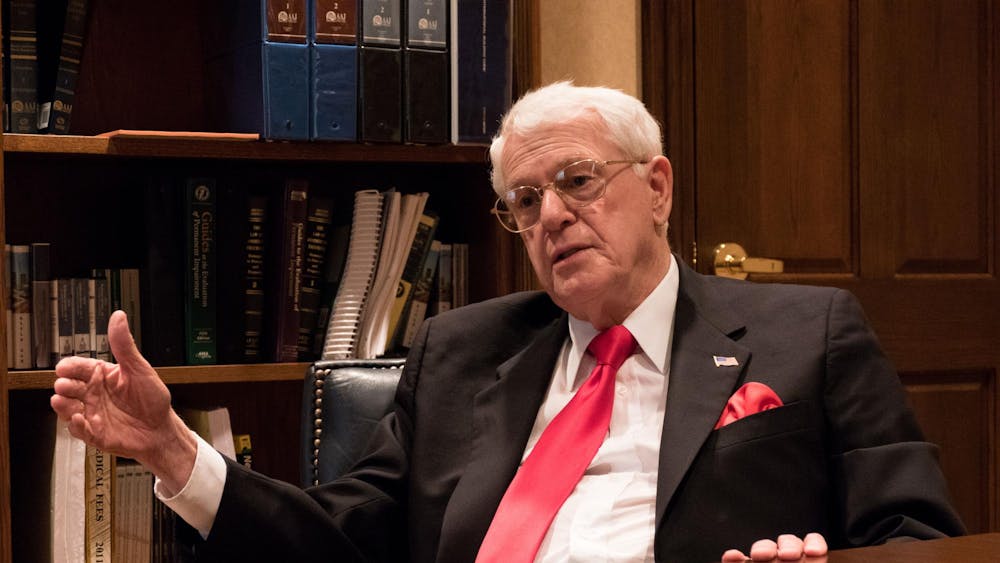Club sports athletes and officials got a surprise when the IU Athletics Department announced Wednesday it will immediately begin charging club teams to use varsity facilities. \nThe decision has infuriated many club sports athletes who said they should have been given more notice about the decision. Club leaders have suspected for months the athletics department would implement a fee, so the Club Sports Federation quickly decided to tap into its emergency fund to help offset these unexpected fees. \n“Having to pay for practice space would wipe out these clubs,” said April Scheuerell, president of the Club Sports Federation, the governing body of the 46 IU club teams. “As student groups, we should be able to use University facilities.”\nAthletics department officials did not respond to repeated interview requests on Friday and Monday.\nExact details of the decision remain unclear, but club sports will now likely have to pay $500 a week so eight teams can practice at the John Mellencamp Pavilion between 10 p.m. and 1 a.m. Monday through Thursday, said Stacey L. Hall, program director for intramural sports, club sports and student development. The teams include men’s and women’s lacrosse, rugby, ultimate frisbee and co-ed baseball and field hockey, she said. Traditionally, IU Athletics offered this space free of charge for club sports. \nOfficials first learned of the decision Wednesday evening when they received a phone call from the athletics office, Hall said. She said club sports officials have not seen any written documents outlining the fee, but confirmed in an e-mail Monday afternoon that she is “almost positive” a $500 per week fee will be implemented. Many questions regarding the new fees remain, club sports officials said, and it is not yet clear when the questions will be answered. \nKathy Bayless, director of campus recreational sports, said club sports first learned of a possible athletics facility fee in October. At that point, though, she said she did not think the fees would be implemented anytime soon. \n“It was our understanding that fees, if they were enforced at all, wouldn’t take effect until next year,” she said. “The surprise in this is that the conversation moved from concept to execution unexpectedly and without written information, without time to equip\nthe clubs.”\nIndeed, the timing of the decision – giving the clubs less than a week to respond – has been the source of the greatest frustration, Scheuerell said. \nClubs operate on razor-thin budgets, Hall said, and don’t have enough money to pay a portion of the $500 fee. \nThe clubs receive some of their money from the University, but raise most of it through fund raising or members’ dues. \n“It’s such an unforeseen thing,” Hall said. “To incur a brand new expense at this level is really hard to do this year.”\nYet clubs have few other \noptions. \nThey can’t practice outside because outdoor fields don’t reopen until after mid-March. And they can’t move to other indoor facilities, such as the Student Recreational Sports Center or gyms at the School of Health, Physical Education and Recreation, because those spaces are constantly occupied. Heavy lacrosse balls and ultimate frisbee discs could also damage the gyms because they weren’t designed for those sports, Hall said.\n“It’s not like you can go rent space from a high school or anywhere else,” she said. \nThe Club Sports Federation decided to use its emergency fund to pay the $500 a week fee, or about $4,000 total, to keep the teams at Mellencamp Pavilion through March 6. \nScheuerell, who is a member of the women’s rugby team, said the cost also stings because club teams will be using the Mellencamp Pavilion when it would normally sit empty. \nOther club athletes agree.\nOwen Dickey, president of the men’s rugby club, said he’s upset by the decision because club sports practices don’t disrupt the athletics department. \n“I think it’s outrageous,” he said. “We’re not getting in their way.” \nClub teams first started using the Mellencamp Pavilion in the spring of 2006, Hall said. Prior to that time, a variety of clubs practiced in Harry Gladstein Fieldhouse, where they often had longer practice hours. But when the fieldhouse got a new track in 2006, athletics moved club sports to the Mellencamp facility, which could accommodate team sports like lacrosse and rugby. \nBayless said she knows space on campus is an issue, and she understands it costs money to operate facilities, even late at night. \n“This is about timing,” she said, “and hoping that the fees, if executed, are truly done in the most reasonable fashion so that we can make it as economical as we can and yet the athletic department addresses the real cost that they face.”
Club sports now pay to play
Get stories like this in your inbox
Subscribe





